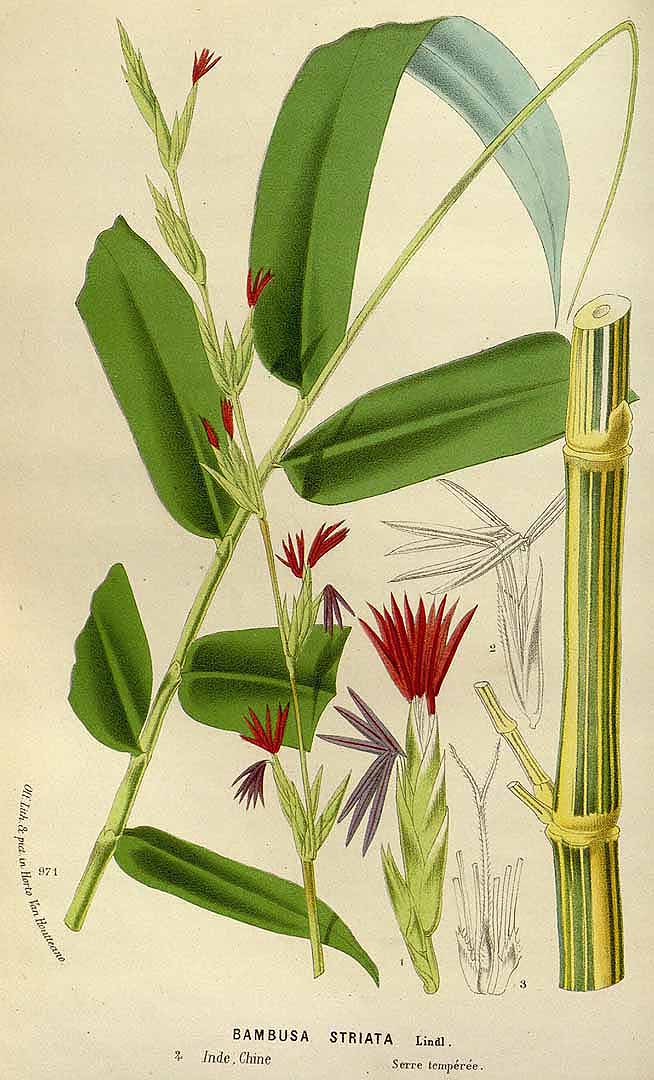! Nouveau site ici !
Vita > Plantae > Magnoliophyta > Liliopsida > Cyperales >
Poaceae > Bambusa
Bambusa vulgaris

 | *** - *
| *** - *
Vita > Plantae > Magnoliophyta > Liliopsida > Cyperales >
Poaceae > Bambusa
Bambusa vulgaris

Une touffe dressée formant un bambou sans épines. C'est un gros bambou avec de fortes tiges utilisées pour les bâtiments. Les tiges peuvent mesurer 20 m de haut et 5 à 10 cm de diamètre à la base. Ils ne... (traduction automatique)
→suite
⬀
Le  donne accès au menu
donne accès au menu (c'est votre point de repère) 😊 ;
En dessous vous avez la classification, à partir de la vie (Vita, premier rang) jusqu'à la classe au dessus de la plante, dont vous trouvez ensuite le nom scientifique/botanique (latin) puis le nom commun (français), le cas échéant ;
C'est aussi un lien vers la fiche complète (tout comme la ✖, en bas à droite, et le +, en dessous de la description) ;
Vient alors l'illustration (ou ce qui la remplace, en attendant), la comestibilité :
Et en bas
⬂



